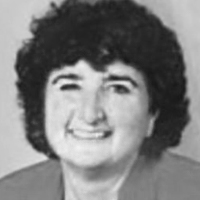Question
How much aspiration is too much?
Answer
If everybody aspirates some and we have the potential to clear aspirated material, this begs the question, "How much aspiration is okay, and how much aspiration is just too much?"
- What was aspirated?
- Acidity
- Fat molecules vs. Water molecules
- Weight
- Bacteria
Aspiration of acidic stomach contents is very dangerous in the lungs and very hard to clear. Thus, getting the reflux under control is going to be an important strategy to reducing pneumonia risk. What about the aspiration of food and liquid? Everybody is always concerned about this, and certainly, as a speech-language pathologist, I spent a lot of time thinking about it. It matters what you aspirated. You can think about this as a continuum of safety. There are fairly safe things at one end of the continuum and others that are more dangerous at the higher end of the continuum. One thing that is fairly benign in your lungs is water. Water is pH neutral, and some of it seems to be absorbed by the lung fluid. There also are molecular channels called aquaporins that have been identified as having a role in channeling water out of the lungs and back into the bloodstream. I am not saying you can pour water into the lungs, but the amount you are likely to aspirate while you were having a drink will be fairly well tolerated.
In terms of risk continuum, up from that would be those foods and liquids that have water-based molecules. These would be things like fruits and most vegetables. They are not as safe as water but safer than those foods and liquids at the higher end of the continuum.
Fatty-based and protein-based molecules are higher on the continuum as they are not very well cleared. This is about phagocytosis and those white blood cells scavenging through the lungs. If the aspirated material is water-based, the absorption occurs much more efficiently. We also have to think about the weight of the aspirated material. This is about mucociliary clearance and the cilia brushing that mucus impregnated aspirate up and out. This process is going to be less efficient with heavier particles. As we know now, people who aspirate food are more likely to get sick than people who aspirate liquid. Additionally, we know that people who aspirate thick liquids, a common intervention for people with dysphagia, are more likely to get sick than people who aspirate thin liquids. As we think about putting a thick liquid intervention into place, we have to make sure that it works. If you put a thick liquid intervention into place and the person is not aspirating that, then we do not have to worry about pulmonary clearance. If this person is still aspirating and the thickened liquid is not doing its job, we will probably do more harm than good. Thick liquids in the lungs are now going to be much harder to clear, and we are putting this individual at higher risk. The moral of the story is that if we put a thick liquid intervention into place, we have to be sure that it is working.
Finally, we have to think about not only the aspiration of something like applesauce but, more importantly, what bacteria might that apple sauce have carried down with it as it traveled through the oral cavity. A moment ago, I said water was pretty benign in the lungs. The caveat is that the water has to be from a clean mouth. If that water had to travel through an oral cavity that has not had a toothbrush in it in weeks, then that water is toxic with many bacteria. Therefore, whatever is aspirated is going to be an important risk factor to consider.
This Ask the Expert is an edited excerpt from the course, Aspiration Pneumonia: Who Gets Sick and How Can We Help?, presented by Angela Mansolillo, MA, CCC-SLP, BCS-S.
